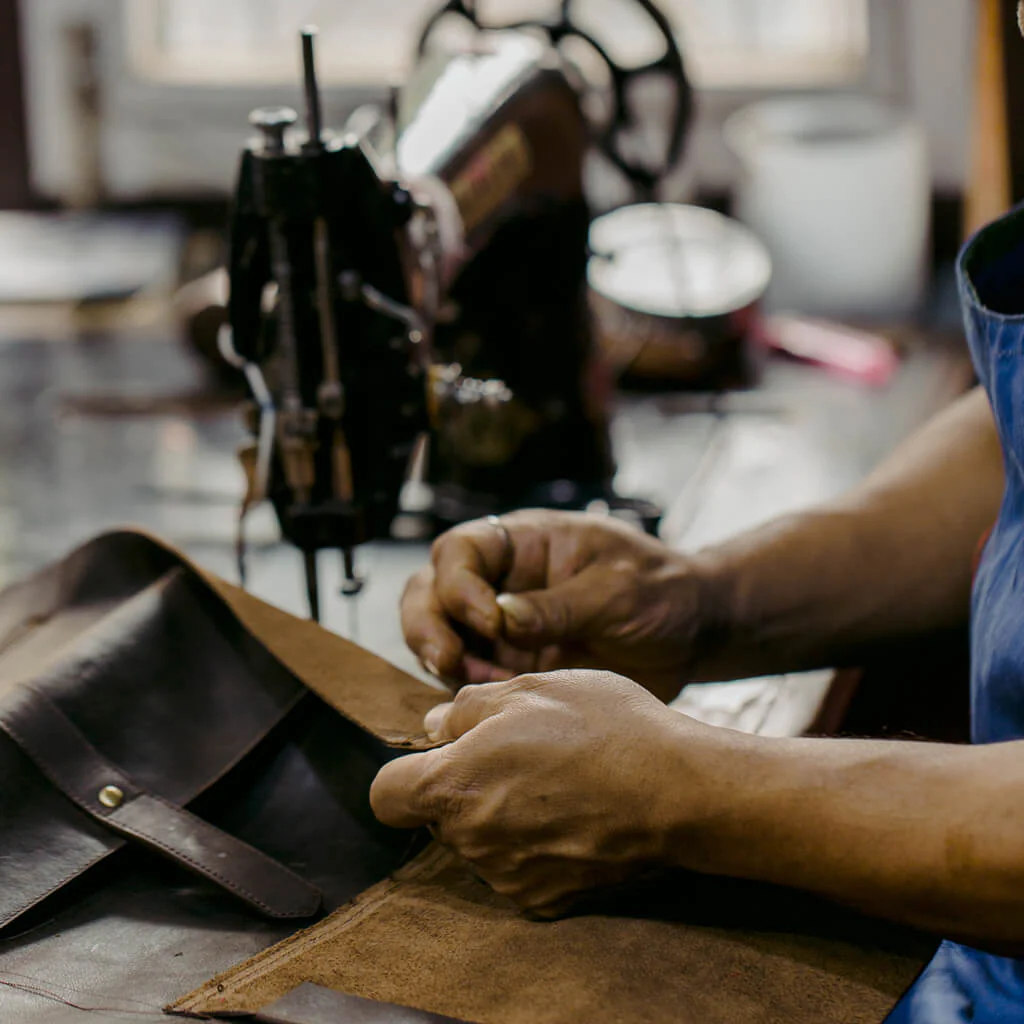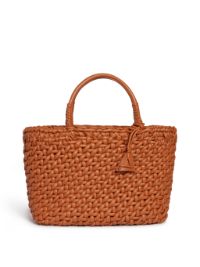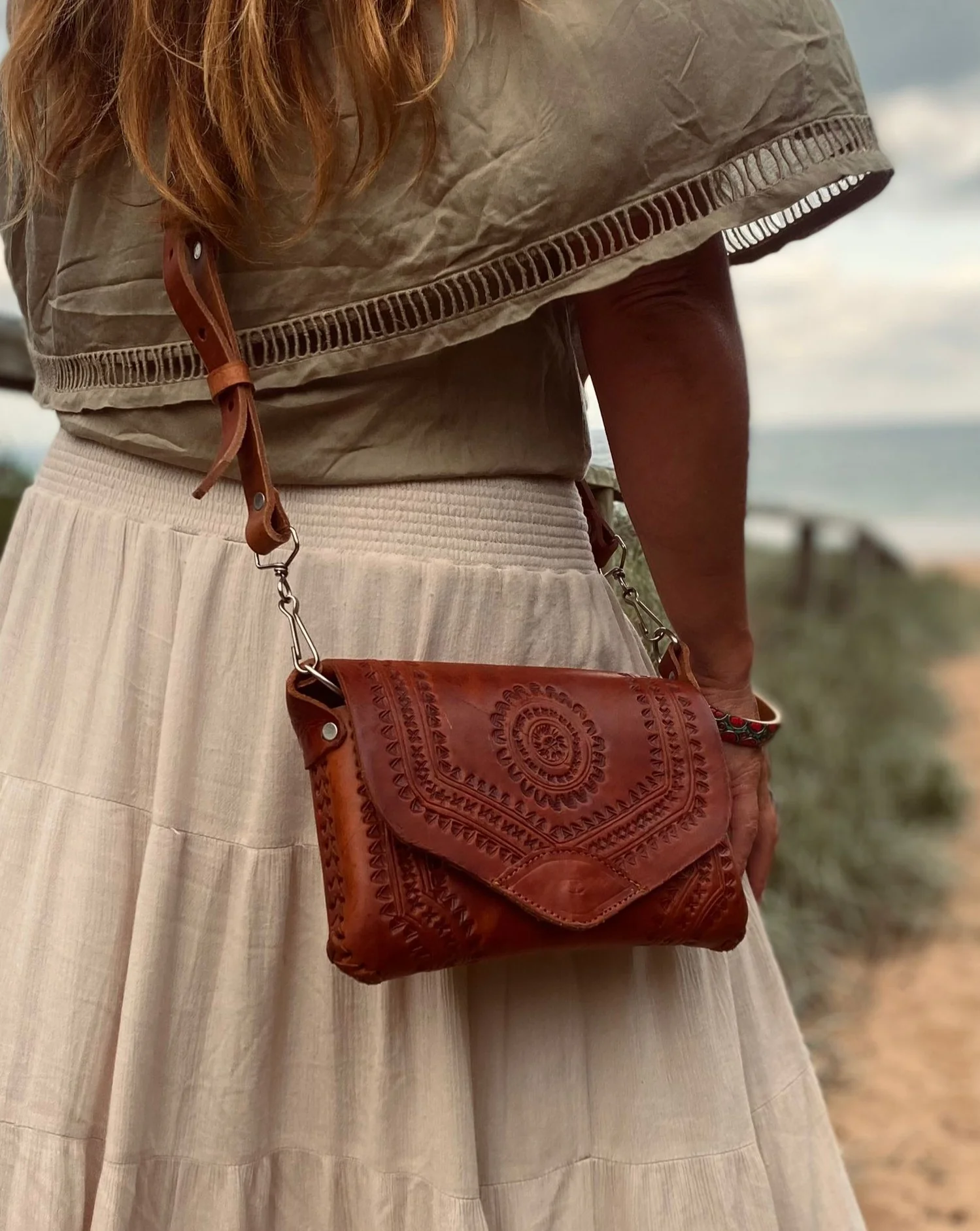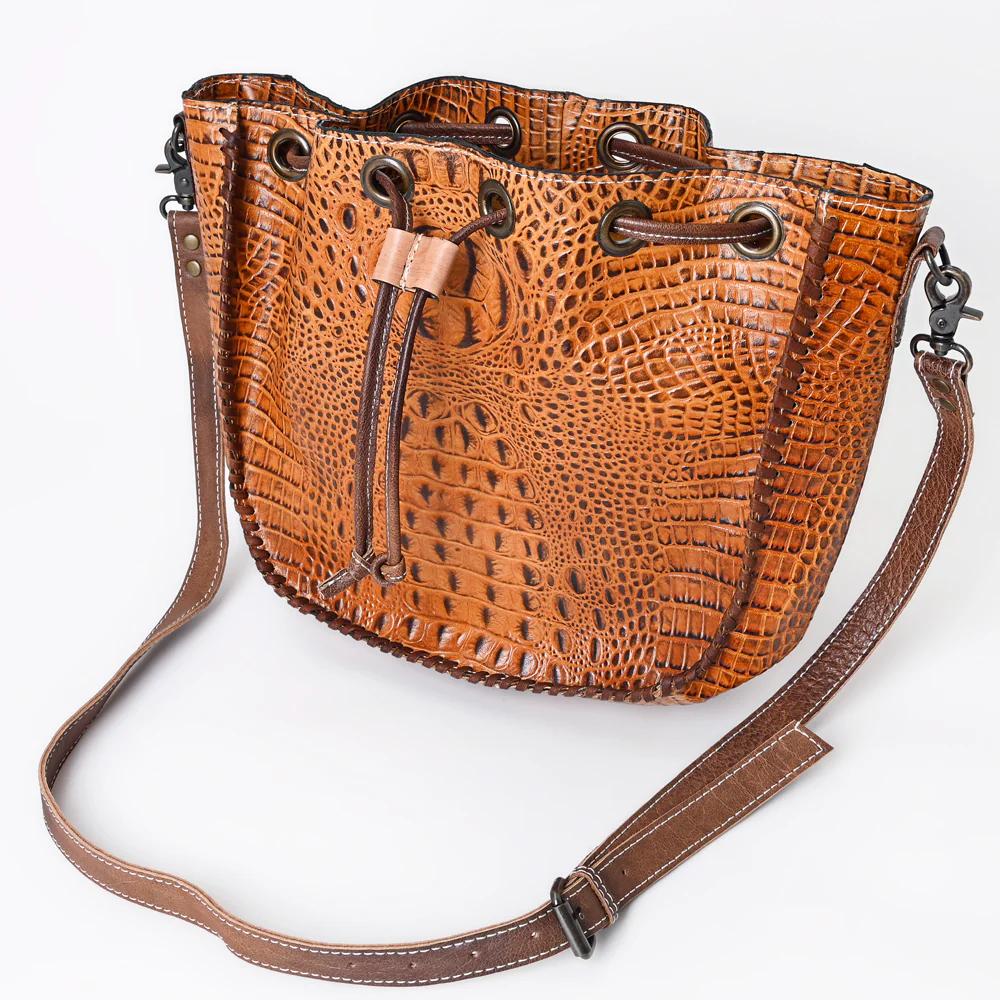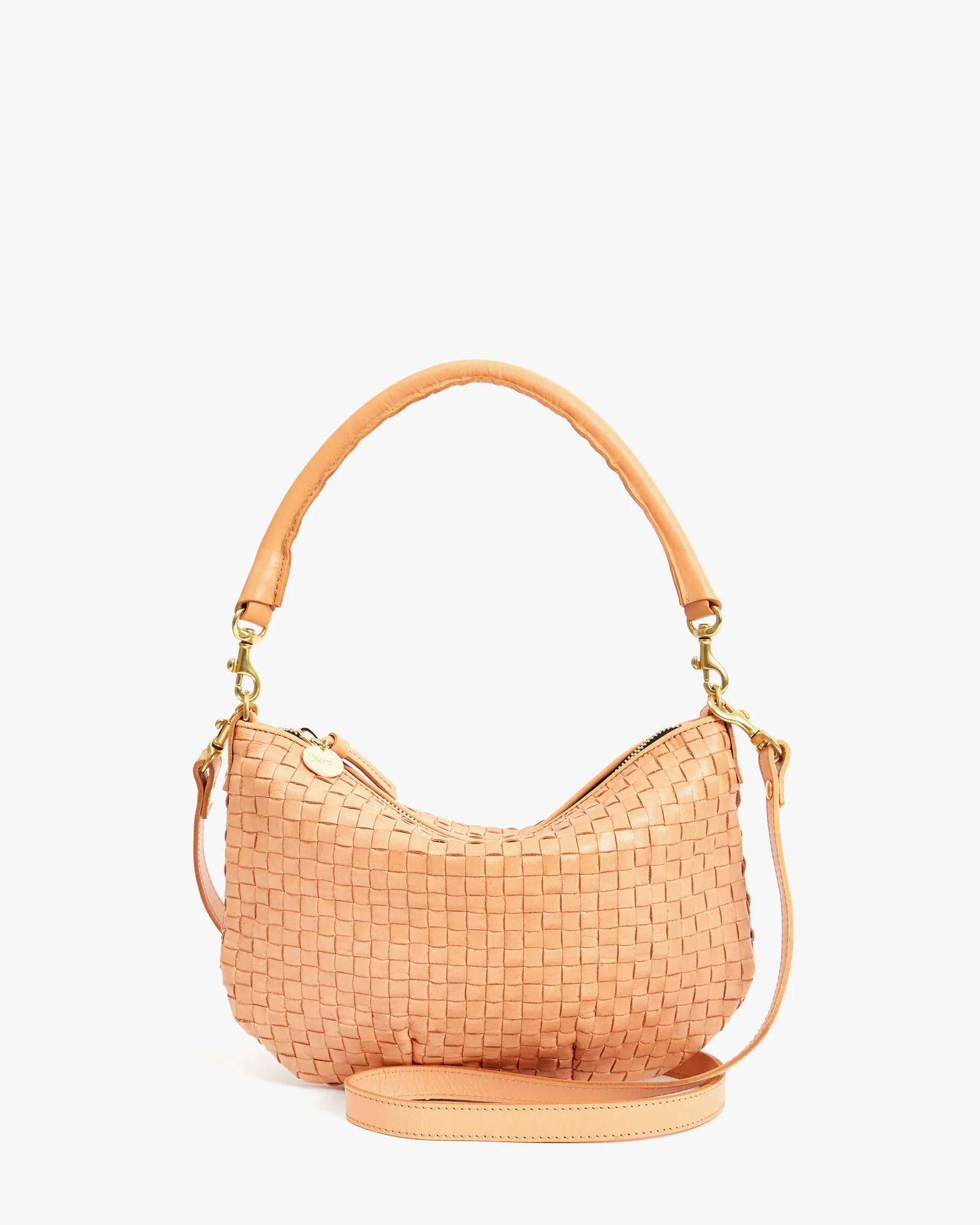Discover the elegance of tradition with our collection of handwoven leather bags, meticulously crafted for discerning tastes. Each piece embodies the fusion of timeless craftsmanship and modern luxury, perfect for those who appreciate the unique beauty and durability of handwoven leather bags.
Introduction to Handwoven Leather Bags
Handwoven leather bags represent the pinnacle of craftsmanship and timeless style. They aren’t just accessories; they are a testament to the enduring allure of artisanal tradition and meticulous detail. In this article, we delve into the world of handwoven leather bags, exploring their unique charm and why they captivate the hearts of discerning fashion enthusiasts.
Table of Contents
Types of Leather Used
1. Full-Grain Leather: Full-grain leather is considered the highest quality of leather available. It includes the outer layer of the hide and retains all the natural grain, which means it hasn’t been sanded, buffed, or corrected to remove imperfections. This type of leather is known for its durability and ability to develop a rich patina over time, making it a popular choice for handwoven bags that are meant to last and improve with age.
2. Top-Grain Leather: Top-grain leather is the second-highest quality of leather. It is similar to full-grain leather but has had the very top layer removed to eliminate imperfections, making it thinner and more pliable. This process also makes the leather less durable than full-grain but allows for a more uniform appearance and finish. Top-grain leather is often used in high-end handwoven leather bags where a balance between durability and a refined look is desired.
3. Vegetable-Tanned Leather: Vegetable-tanned leather refers to leather that has been tanned using tannins and other ingredients found in vegetable matter, such as tree bark, wood, leaves, fruits, and roots. This method of tanning is more environmentally friendly and produces leather with a distinct natural color that darkens and develops a unique patina over time. Vegetable-tanned leather is stiff at first but softens and becomes more flexible with use, making it an excellent choice for handwoven bags.
4. Chrome-Tanned Leather: Chrome-tanned leather is tanned using chromium salts and chemicals, resulting in a softer and more pliable leather than vegetable-tanned leather. It’s available in a wide range of colors and is more resistant to water and stains. Because of its flexibility and the variety of finishes it can achieve, chrome-tanned leather is often used in stylish, contemporary handwoven bags.
5. Nappa Leather: Nappa leather is a high-quality leather known for its softness and smooth texture. It’s typically made from full-grain or top-grain leather and is treated to give it a supple feel, making it a popular choice for luxury handwoven bags that require a delicate, refined appearance without sacrificing strength.
6. Suede: Suede is made from the underside of the animal hide, giving it a soft, napped surface. It’s less durable than the other types of leather mentioned but is valued for its texture and softness. Suede adds a unique look and feel to handwoven bags, making them stand out for their plush, velvety texture.

How Handwoven Leather Bags are Made
The Process of Selecting Leather
The journey of creating a handwoven leather bag begins with the selection of the right type of leather. Artisans look for high-quality leather that not only looks and feels luxurious but also has the durability to withstand the weaving process and daily use. The choice of leather can vary from soft calfskin, known for its smooth texture and flexibility, to tougher options like buffalo or goat leather, each offering different textures and durability levels. This selection process is crucial as it determines the bag’s final aesthetic and functional qualities.
Preparing the Leather
Once the leather is selected, it undergoes a preparation process. This includes cleaning, dying, and cutting the leather into strips. The width and thickness of these strips are carefully considered to ensure they are suitable for weaving. The preparation phase is meticulous, as any imperfections in the strips can affect the overall look and strength of the bag.
Handweaving Techniques
The core of making a handwoven leather bag lies in the weaving technique. Artisans employ various traditional methods, such as basket weave, herringbone, or the more complex intrecciato weave, to create patterns that are not only aesthetically pleasing but also add to the bag’s structural integrity. This process is entirely done by hand, requiring hours of work and an expert level of precision. The artisan’s skill in manipulating the leather strips into tight, even weaves is what sets a handwoven bag apart from mass-produced items.
Assembling the Bag
After the weaving is complete, the next step is to assemble the bag. This involves stitching the woven leather pieces together with a durable thread, often by hand or with the help of a heavy-duty sewing machine designed for leather. Care is taken to ensure that the seams are strong and blend seamlessly with the bag’s design. This stage may also involve attaching other leather pieces that are not woven, such as the bag’s base, sides, or straps, to complete the structure of the bag.
Adding Hardware and Finishing Touches
The final step in the creation of a handwoven leather bag is adding hardware and finishing touches. This includes metal components such as buckles, clasps, zippers, and feet, which are carefully selected to complement the bag’s design and enhance its functionality. The bag is then finished with a lining, usually made of a durable fabric or leather, to protect the interior and give the bag a polished look. Finally, the artisan may apply a protective coating to the leather to preserve its color and texture, ensuring the bag remains beautiful and functional for years to come.

The Significance of Owning a Handwoven Leather Bag
A Testament to Timeless Craftsmanship
Handwoven leather bags are the product of hours of painstaking labor, reflecting the skills passed down through generations of artisans. Each bag tells a story of meticulous craftsmanship, where every weave and stitch is imbued with the artisan’s dedication and passion for their craft. Owning such a bag connects you to this timeless tradition, celebrating human ingenuity and the tactile beauty of handcrafted goods in an era dominated by mass production.
Unique Aesthetic Appeal
The unique aesthetic of a handwoven leather bag is unparalleled. The intricate patterns, the texture of the leather, and the bespoke design ensure that no two bags are exactly alike. This uniqueness makes the bag not just an accessory but a piece of wearable art that stands out in a sea of mass-produced items. It’s a statement of personal style that expresses individuality and a discerning taste for quality and beauty.
Sustainability and Ethical Production
Many handwoven leather bags are produced with a strong emphasis on sustainability and ethical practices. Artisans often use locally sourced materials, and the handweaving process itself is energy-efficient, requiring minimal mechanical intervention. By choosing a handwoven leather bag, you’re supporting environmentally responsible manufacturing processes and contributing to the reduction of the carbon footprint associated with the fashion industry.
Investment in Durability and Quality
Handwoven leather bags are built to last. The careful selection of high-quality leather and the strength imparted by the weaving process make these bags incredibly durable. Unlike fast fashion items that wear out quickly, a handwoven leather bag can endure years of use, often aging gracefully and gaining character over time. It’s an investment that pays dividends in both longevity and style.
Supporting Artisans and Traditional Techniques
Purchasing a handwoven leather bag directly supports artisans and helps preserve traditional crafting techniques that might otherwise fade into obscurity. It’s a way of acknowledging the value of human labor and creativity, providing economic support to communities where these skills are a vital source of income. This support helps ensure that these ancient crafts continue to thrive and be passed on to future generations.
A Reflection of Personal Values
Choosing a handwoven leather bag also reflects a commitment to quality over quantity, an appreciation for the slow fashion movement, and a conscious decision to prioritize sustainable and ethical consumer choices. It signifies an understanding of the true value of possessions, where the emphasis is on the story, the craftsmanship, and the impact of each item, rather than mere acquisition.
How to Care for Your Handwoven Leather Bag
Regular Cleaning
- Dust Removal: Use a soft, dry cloth to gently wipe off any surface dust from your bag. It’s crucial to do this regularly to prevent dust particles from settling into the weave, which can make them harder to remove over time.
- Spot Cleaning: For spills or stains, immediately blot the area with a clean, damp cloth. Avoid rubbing the stain as this can cause it to spread or push it deeper into the leather. For persistent stains, consider using a leather cleaner specifically designed for the type of leather your bag is made of. Always test the cleaner on a small, inconspicuous area first.
Conditioning
Leather, much like skin, needs moisturization to prevent it from drying out and cracking. Use a quality leather conditioner every few months, or as needed, to keep the leather supple. Apply a small amount of conditioner to a soft cloth and gently rub it into the leather in circular motions. Avoid over-conditioning, as too much moisture can make the leather greasy or alter its natural color.
Protection
- Water Repellent: Applying a water-repellent product can protect your bag from water damage. Be sure to use a product that is safe for handwoven leather and does not contain harmful chemicals that could damage the weave.
- Avoid Harsh Conditions: Try to keep your handwoven leather bag away from direct sunlight, heat, and humidity, which can cause the leather to fade, warp, or become misshapen. Also, avoid contact with sharp objects that could snag or tear the weave.
Storage
When not in use, store your handwoven leather bag properly to maintain its shape and texture:
- Stuffing: Fill the bag with soft paper or a dust bag to help retain its shape. Avoid using newspaper, as the ink can transfer to the lining.
- Cover: Place your bag in a breathable fabric bag (often provided by the manufacturer) to protect it from dust and scratches. Avoid plastic bags, as they can trap moisture and lead to mildew.
- Position: Store your bag in a cool, dry place, lying flat or upright with support to prevent it from slumping and creasing. Keep it away from other items that could press into the leather and cause indentations.
Hardware Maintenance
Metal components like zippers, buckles, and clasps also need attention. Keep them clean and free of grime by wiping them with a dry cloth. If they start to lose their shine, a metal polish suitable for the type of metal can be used sparingly.
Professional Care
For serious damage or wear, consider taking your handwoven leather bag to a professional leather repair shop. They can offer specialized services like deep cleaning, color restoration, and repair work that can extend the life of your bag.
Conclusion
Handwoven leather bags are more than just fashion statements; they are emblems of tradition, craftsmanship, and sustainable luxury. By choosing a handwoven leather bag, you’re not only acquiring a beautiful and durable item but also supporting a rich heritage of artisanal skill.
FAQs
- What makes handwoven leather bags different from other leather bags?
- How can I verify the authenticity of a handwoven leather bag?
- Are handwoven leather bags suitable for everyday use?
- How do I clean and maintain my handwoven leather bag?
- Where can I find authentic handwoven leather bags?






